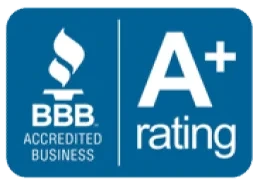Navigating Roofing Estimates: Tips for Getting the Most Accurate Job Quote
Whether you’re planning a roof replacement or repair, one of the first and most important steps is obtaining an accurate estimate. Roofing is a significant investment, so understanding the factors that go into a roofing quote can help you avoid unexpected costs and ensure you’re getting a fair deal. In this blog post, we’ll provide tips to help you navigate roofing estimates and get the most accurate job quote for your project.
1. Understand What Goes Into a Roofing Estimate
A roofing estimate should provide a clear breakdown of all costs involved in the project. These typically include:
- Materials: This covers the cost of shingles, underlayment, flashing, and other necessary roofing materials. Higher-quality materials, such as slate or metal, will increase the overall price.
- Labor: Labor costs will depend on the complexity of your roof (pitch, height, number of layers, etc.), as well as the expertise of the contractor. Removing old roofing materials and preparing the roof deck can also impact labor costs.
- Disposal and Cleanup: Many roofing jobs include the removal of old roofing materials, which requires proper disposal. Your estimate should account for waste disposal and cleanup services.
- Permits and Fees: Depending on your location, you may need permits to carry out roofing work. Make sure your contractor includes permit costs in the estimate.
Pro Tip:
Ask for a line-by-line breakdown so you know exactly what you’re paying for. This helps avoid any hidden fees or surprise charges later in the project.
2. Get Multiple Quotes
It’s always a good idea to get multiple quotes from different roofing contractors. This gives you a better understanding of market rates and helps you compare services, materials, and warranties offered by different companies. Make sure to compare estimates on a like-for-like basis; cheaper isn’t always better, especially if lower-quality materials or inexperienced labor are involved.
Pro Tip:
Aim to get at least three quotes from reputable contractors. This will provide a range of pricing options and help you spot any inconsistencies in the estimates.
3. Ask for a Roof Inspection
Before providing an eastimate ,a reputable roofing contractor should conduct a thorough inspection of your roof. This allows them to accurately assess the condition of your roof, identify any underlying issues (such as leaks, mold, or structural damage), and provide a detailed estimate based on their findings.
Pro Tip:
Avoid contractors who offer quotes over the phone without inspecting your roof. An in-person inspection ensures that the quote reflects the real condition of your roof and prevents surprise costs down the line.
4. Look for Detailed Descriptions of Materials and Work
An accurate roofing estimate should clearly describe the materials to be used, including the type of shingles, underlayment, and any other components like flashing or ventilation systems. It should also outline the specific work involved, such as roof deck repair or replacement, installation of drip edges, and placement of ridge vents.
Pro Tip:
Ask for the brand and type of materials the contractor will use, and do your own research to ensure they meet your expectations for durability and appearance. High-quality materials may cost more upfront but offer better long-term value.
5. Check the Warranty Details
A good roofing estimate should include details about both the manufacturer’s warranty (for materials) and the contractor’s warranty (for workmanship). Make sure the terms of the warranty are clear and understand what is covered and for how long.
- Manufacturer’s Warranty: Covers defects in the roofing materials.
- Workmanship Warranty: Covers any issues related to the installation itself.
Pro Tip:
Always ask about the length and conditions of the warranties. A longer warranty period often reflects the contractor’s confidence in the quality of their work.
6. Consider the Scope of Work
Different contractors may approach your roofing project in different ways. Some may suggest a complete roof replacement, while others might recommend a repair. Make sure the scope of work is clearly defined in the estimate. It should specify whether the estimate is for a full roof replacement or a repair, and whether any additional work (such as replacing flashing or fixing gutters) is included.
Pro Tip:
If estimates vary greatly in the scope of work, ask each contractor to explain why they recommend their approach. This will help you decide the best course of action for your roof.
7. Ask About Timing
The timing of your roofing project can impact the final cost. Some contractors may offer a discount for offseason work, while others may charge more during busy times. Your estimate should include a projected start date and completion time for the project, so you can plan accordingly.
Pro Tip:
While getting your roof repaired or replaced quickly may be a priority, be cautious of contractors who promise rapid turnaround times without explaining how they plan to maintain quality.
8. Inquire About Payment Terms
A detailed estimate should also include the payment structure for your roofing project. Contractors typically require a down payment, followed by payments at different stages of the project, such as after materials are delivered or when the job is halfway complete.
Pro Tip:
Avoid contractors who ask for full payment upfront. A typical down payment should be between 10% and 25% of the total cost, with the balance paid upon completion.
9. Check for Insurance and Licensing
Before signing any agreement, ensure that your roofing contractor is licensed, bonded, and insured. This is crucial to protect you from liability in case of accidents or damage during the project. Your estimate should include proof of these credentials, along with the contractor’s license number.
Pro Tip:
Don’t hesitate to ask for copies of insurance certificates and licenses. You can also verify the contractor’s credentials with your local licensing authority.
Final Thoughts
Navigating roofing estimates doesn’t have to be overwhelming. By understanding what goes into a quote, comparing multiple estimates, and asking the right questions, you can ensure that you’re getting an accurate, fair price for your roofing project.
At Absolute Home Solutions, we pride ourselves on providing transparent, detailed roofing estimates that help homeowners make informed decisions. Contact us today and let us guide you through the process of getting the best roof for your home—at the best value.
____________________________
1. Contain the Water
The first thing you should do when you notice a leak is to contain the water. This prevents further damage to your walls, ceilings, and floors. Place a bucket, trash can, or any large container under the leak to catch the water. If water is splashing onto the floor, you can place a towel or old t-shirt in the bottom of the container to soften the splash.
Pro Tip:
If the water is causing a bulge in your ceiling, use a screwdriver or sharp object to puncture the bulge and release the water. While this may seem counterintuitive, it prevents water from spreading and causing further ceiling damage.
2. Protect Your Belongings
Move any valuable items, furniture, or electronics out of the way to protect them from water damage. If moving them isn’t possible, cover them with plastic sheeting, tarps, or waterproof materials until the leak is fixed.
Pro Tip:
If the leak occurs near wiring or electrical outlets, shut off power to the area to avoid electrical hazards.
3. Locate the Source of the Leak
Once the immediate water is contained, your next step is to locate the source of the leak. Start by checking the attic if you have one. Look for signs of moisture, mold, or stains around beams and insulation. Follow the water trail upwards to the potential entry point on the roof.
Common causes of leaks include:
- Damaged or missing shingles
- Cracked flashing
- Clogged gutters
- Ice dams (in colder climates)
- Skylights or vents that aren’t properly sealed
Pro Tip:
Sometimes, the source of the leak is not directly above the spot where water is dripping inside. Water can travel along beams and other structures before finding an outlet, so thorough inspection is essential.
4. Apply Temporary Fixes
If you’ve identified the leak source and it’s safe to do so, apply temporary fixes to reduce water intrusion until a professional can provide a permanent solution. Here are a few methods:
- Use roofing tape or caulk: Apply waterproof roofing tape or caulk to small cracks or gaps around flashing, shingles, or vent pipes.
- Cover with a tarp: For larger issues, cover the damaged area of the roof with a heavy-duty tarp. Secure it tightly with nails or bricks to prevent further water from entering your home.
Pro Tip:
If the damage is extensive or you’re uncomfortable making temporary repairs, avoid getting on the roof yourself, especially during bad weather. It’s safer to call in a roofing professional to handle the issue.
5. Document the Damage
Take photos and document the leak, both inside and outside of your home. This documentation can be vital for insurance claims, especially if the damage is related to a storm or other covered event.
Make sure to:
- Photograph the roof from the ground if possible.
- Take detailed pictures of the water damage inside your home.
- Keep any receipts for emergency supplies or temporary repairs.
Pro Tip:
Contact your homeowner’s insurance provider as soon as possible to determine if roof repairs or replacements are covered under your policy. The documentation will help speed up the claims process.
6. Call a Roofing Professional
Once you’ve controlled the situation, it’s time to call in the experts. A licensed roofing contractor will assess the damage, pinpoint the cause, and provide you with options for repair. Addressing the issue promptly with professional help is the best way to prevent small leaks from becoming large, expensive problems.
Pro Tip:
At Absolute Home Solutions, we offer emergency roof repair services and free inspections to help homeowners tackle leaks before they get out of control. Our experienced team will provide honest recommendations and quality repairs that last.
7. Prevent Future Leaks
After your roof has been repaired, it’s important to take steps to prevent future leaks. Routine maintenance and inspections are key to catching small problems before they turn into major issues. Here are a few preventative tips:
- Regular inspections: Have your roof inspected annually and after major storms.
- Clear gutters and downspouts: Keep gutters free of leaves and debris to ensure proper drainage and prevent water backup.
- Trim overhanging branches: Tree limbs that touch or hang over your roof can cause damage during storms.
- Replace aging shingles: If your roof is older, consider replacing shingles that are curling, cracking, or missing altogether.
Pro Tip:
Maintaining proper attic ventilation and insulation can also help reduce the risk of leaks caused by condensation or ice dams in the winter.
Final Thoughts
A leaking roof can feel like a nightmare, but taking swift action can help minimize damage and make the repair process smoother. By containing the water, protecting your belongings, and contacting a professional for help, you can ensure your home stays safe and dry.
At Absolute Home Solutions, we specialize in diagnosing and fixing roof leaks quickly and effectively. Whether you need a small repair or a full roof replacement, our team is here to help. Contact us today for expert advice!
_______________________
Roofing 101: A Guide to Understanding Roofing Terminology
When it comes to roofing, understanding the terminology can feel like learning a new language. Whether you’re considering a roof replacement, making repairs, or just want to be more informed, knowing the basic terms can make conversations with contractors more productive and less overwhelming. In this guide, we’ll walk you through some key roofing terms to help you understand the ins and outs of your roof.
1. Shingles
Shingles are the most visible part of a roof, acting as the outermost layer of protection. They come in various materials, including asphalt, wood, metal, and slate. Asphalt shingles are the most popular due to their affordability and durability, while metal and slate offer premium, long-lasting alternatives.
Key Tip:
When selecting shingles, consider factors like climate, durability, and aesthetic appeal to find the right fit for your home.
2. Roof Deck
The roof deck is the foundation of the roofing system. It’s the surface (usually made of plywood or OSB) that supports all other layers of the roof. If the roof deck is damaged or weakened, it may require repair or replacement during a roofing project.
Key Tip:
Regular roof inspections can help identify problems with the roof deck before they become severe, such as sagging or soft spots.
3. Underlayment
Underlayment is a protective layer that sits between the roof deck and the shingles. It acts as a moisture barrier, preventing water from seeping into your home in case shingles become damaged or displaced. There are two common types of underlayment: felt (made from paper saturated with asphalt) and synthetic underlayment.
Key Tip:
Upgrading to synthetic underlayment can offer better water resistance and durability compared to traditional felt.
4. Flashing
Flashing is a thin material, typically metal, installed around areas where the roof meets vertical surfaces such as chimneys, vents, skylights, and walls. Its primary purpose is to direct water away from seams and prevent leaks in these vulnerable areas.
Key Tip:
Flashing should be inspected during routine maintenance, as loose or damaged flashing is a common cause of roof leaks.
5. Drip Edge
A drip edge is a metal strip installed along the roof’s edge to guide water away from the fascia (the board running along the roof’s edge) and into the gutter system. This prevents water from running down the sides of your house, which can lead to structural damage over time.
Key Tip:
Properly installed drip edges are crucial for preventing water damage to your home’s exterior and foundation.
6. Ridge and Ridge Vent
The ridge is the horizontal line where two roof planes meet at the top. A ridge vent is a ventilation system installed along this line to allow hot, humid air to escape from the attic. This helps regulate temperature and moisture levels, extending the life of your roof and improving energy efficiency.
Key Tip:
Make sure your attic has proper ventilation to avoid moisture buildup, which can lead to mold and roof deterioration.
7. Eaves and Soffit
The eaves are the edges of the roof that overhang the exterior walls, providing shade and directing water runoff into the gutters. The soffit is the underside of this overhang and is often ventilated to allow air to circulate into the attic.
Key Tip:
Maintaining clean soffit vents ensures proper airflow, which helps prevent moisture and heat damage inside the attic.
8. Gable
A gable is the triangular portion of a wall between the edges of intersecting roof pitches. Homes with gabled roofs have two sloping sides that come together at a peak, creating the iconic triangle shape often seen in traditional houses.
Key Tip:
Gabled roofs are popular for their simple design and efficient water runoff, but they are more vulnerable to wind damage in storm-prone areas.
9. Valley
A valley is where two roof slopes meet, forming a V-shaped depression. Water naturally flows into valleys, making them particularly susceptible to leaks. Proper valley installation and flashing are crucial for preventing water infiltration in these areas.
Key Tip:
Valleys should be inspected regularly, as debris buildup or damage can lead to pooling water and eventual leaks.
10. Pitch
The pitch of a roof refers to its steepness or slope. It is measured by the number of inches the roof rises vertically for every 12 inches it extends horizontally. Roofs with a steep pitch offer better water runoff but can be more challenging (and expensive) to repair or replace.
Key Tip:
Understanding your roof’s pitch can help you choose the best materials and prepare for the costs associated with maintenance or replacement.
11. Ice Dam
An ice dam forms when snow on a roof melts and refreezes at the eaves, preventing proper water drainage. This can lead to water backing up under the shingles and into your home. Ice dams are common in colder climates and can cause significant damage if not addressed.
Key Tip:
Insulating your attic and ensuring proper ventilation can help prevent ice dams by maintaining a consistent roof temperature.
12. Gutters and Downspouts
Gutters are the channels that collect rainwater from the roof and direct it into downspouts, which carry the water away from your home’s foundation. Clogged or damaged gutters can lead to water pooling on the roof or near the foundation, causing structural issues.
Key Tip:
Regular gutter cleaning and maintenance are essential for keeping water away from your home’s roof and foundation.
Final Thoughts
Understanding roofing terminology empowers you to make informed decisions about your home. Whether you’re having a conversation with your contractor or planning a roofing project, knowing the terms above will help you feel more confident in the process. At Absolute Home Solutions, we’re here to guide you through every step of your roofing journey. Contact us today for expert advice.







